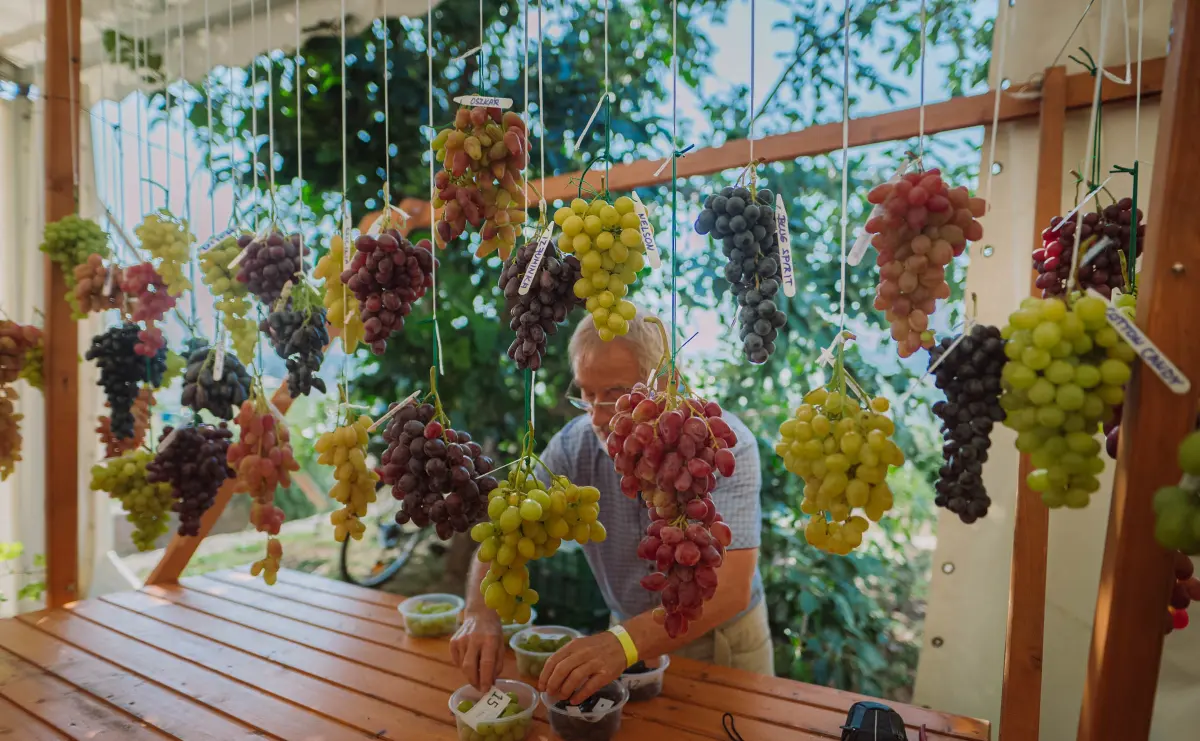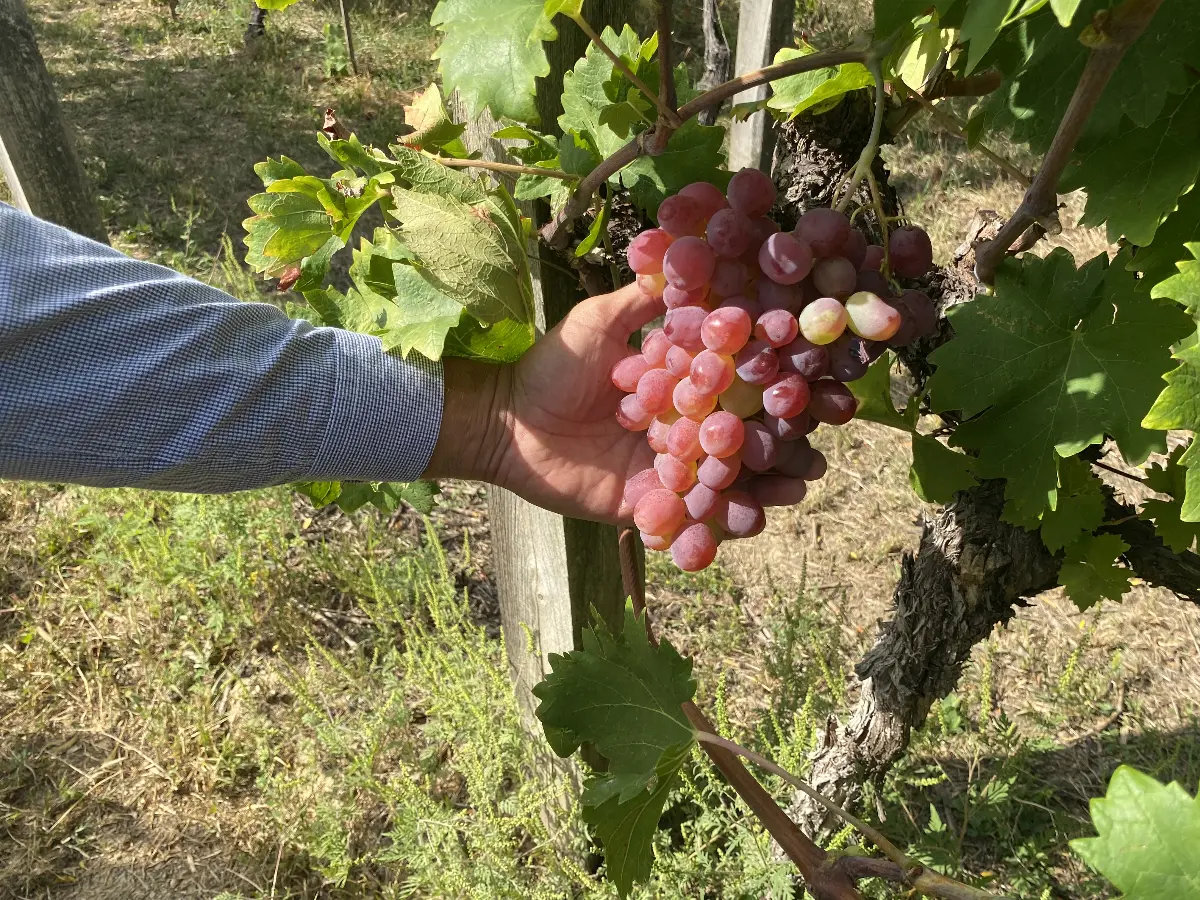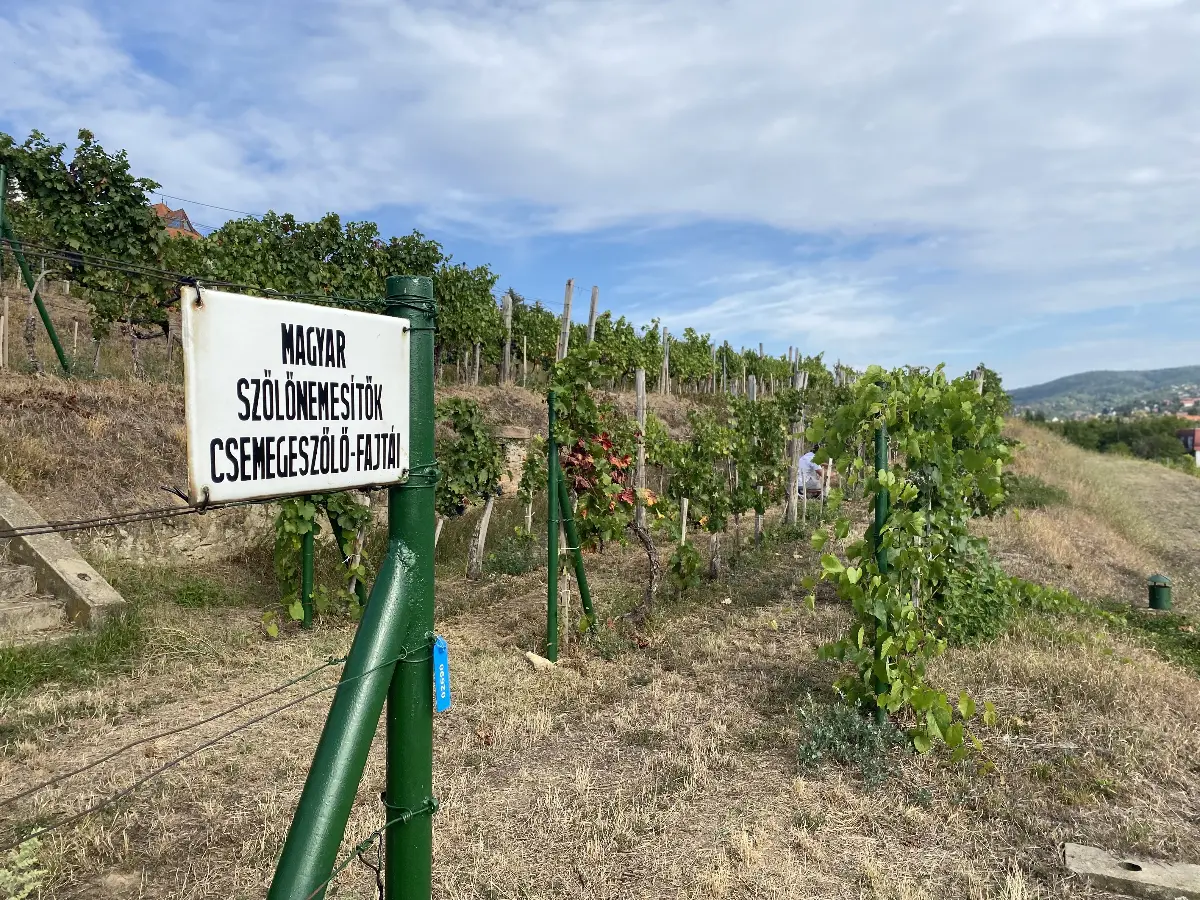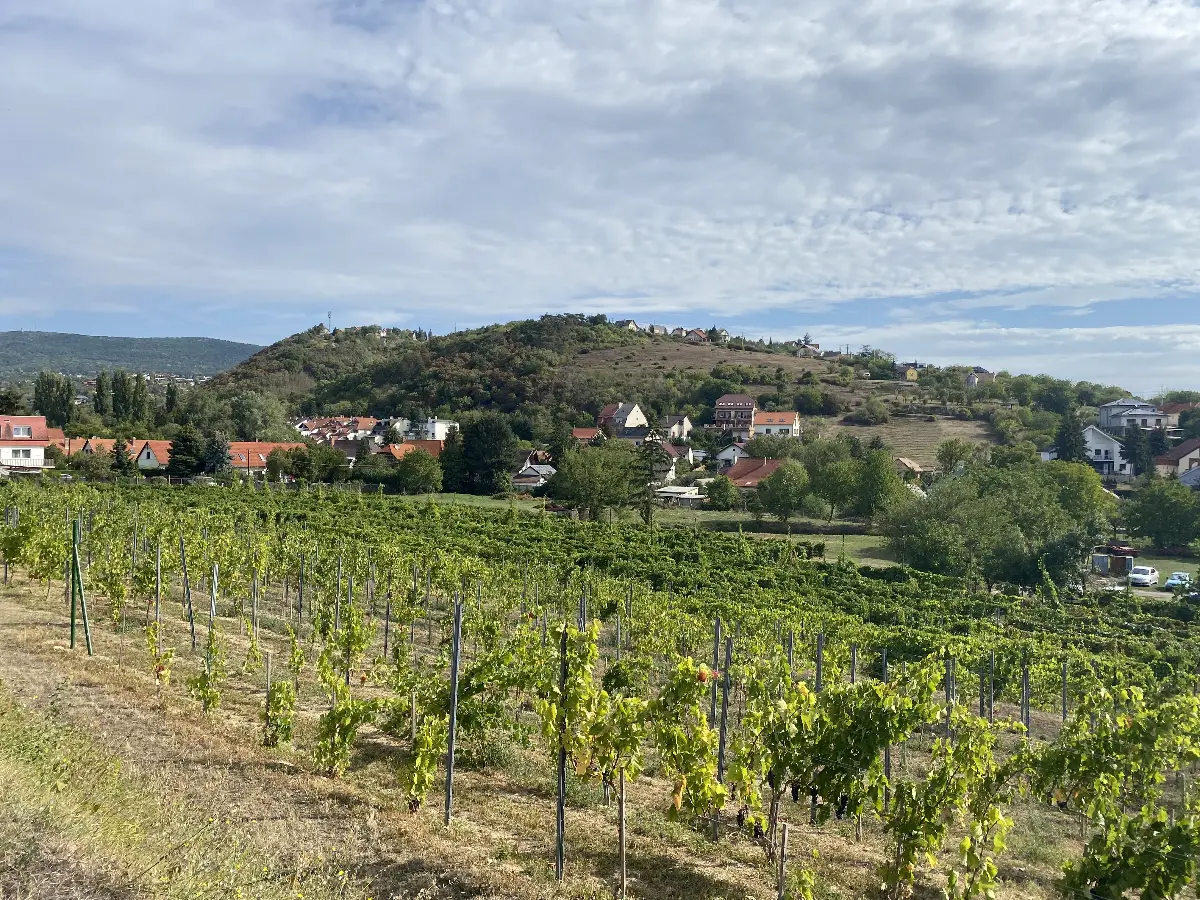
Helyszín címkék:
They are experimenting with aniseed and heart-shaped table grapes in Pécs!
Szabó Sára
We are just wandering around in the second-largest gene bank of Europe, in Pécs, where more than 350 varieties of table grapes are preserved alongside the wine grape collection. The plots - with 5-10 vinestocks in each - contain fruits of such incredible shape, colour and flavour, that we can only marvel at the collection. And also, at the sad fact that currently, the Hungarian table grape supply relies almost entirely on imports. Our guide, Dr. Péter Teszlák, Research Director of the PTE Research Institute of Viticulture and Enology, outlines the present situation. He says that in high season, Italian and Spanish grapes dominate the shelves, while in winter, imported grapes from South Africa, Argentina, Chile, India and Brazil do. This is what they want to change.

Growing table grapes is a much more difficult field than wine grapes, because it requires more water and human resources. But in return, you get bigger berry sizes, crunchier, fleshier and softer skinned fruits, just the sort of thing you want to eat when you want a sweet treat. Public taste has been changing a lot in recent years: consumers are demanding seedless grapes with even larger and larger berries and a perfect appearance. And the truth is, it doesn't hurt if the fruit itself has 'something more' to offer.
The first step is that we select the - preferably resistant - varieties that are well adapted to the local climate, only the best of the best. The aim of breeding is to create something - anything - better, more unique. Whether it's the flavour, the size or the colour, the final result should be special,
- says Péter Teszlák.
In the Pécs gene bank we can see and taste fantastic results. There are Japanese, Georgian, Ukrainian, Turkish, old Hungarian, Carpathian Basin varieties and even ancient table grape sorts from Uzbekistan, all bred in Hungarian soil, and all very fond of the Hungarian climate. In addition, the fruits are all colours of the rainbow. We are incredibly lucky to be able to taste the Valek variety with its tea-sweet aroma, and we also get to be amazed by the Smaragd, which can produce berries as big as walnuts. The Prima Ukrajnü has a spicy, perfume-like aroma, while the Halhólyag can be kept even until Christmas, in a cooler place. A big favourite has been the Greek, seedless Attika, but the Russian hybrid Everest has also been turning heads.

It isn't the end of the story with just experimenting - we continue our conversation over a bite - because the work of the research team doesn't end with the 'birth' of an exciting variety. In our country, farmers are only allowed to plant grapes of varieties that are listed in the National Variety Register. In addition to the breeding process, which can take up to 15 years, a variety certification test is needed to ensure that the results are accepted by the state. The latter is a 5-year process, during which the variety can be provisionally licensed for reproduction and the breeding can begin.

Even though it's a long, intergenerational process, Péter Teszlák points out that table grapes can have several final purposes: they can be used for fresh consumption, or even as raisins or juice. So, they can only encourage farmers to start growing their own table grapes! When selecting and introducing new varieties, according to the professional expert, the most important aspect is the guaranteed safety of the harvest.
Decades ago, table grapes played a much more important role in the nutrition of Hungarian households. But today - sadly enough -, they are being replaced by foreign imports, which are less safe from a food safety point of view. This is not the right situation, but change is on the way, according to the researcher in Pécs. We can't wait to see the results, because what our taste buds have experienced at the Institute's estate, is something we would wish for everyone.






